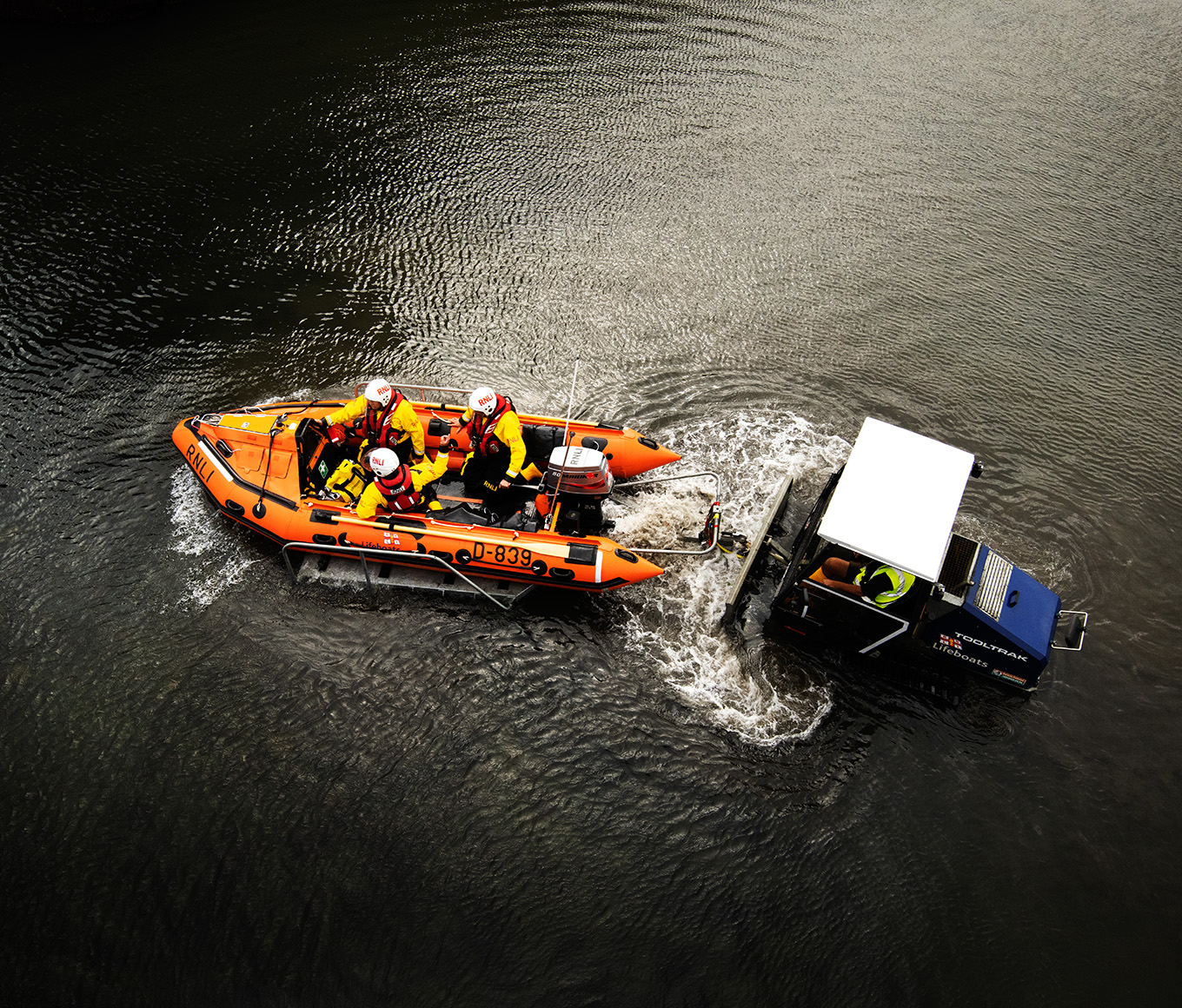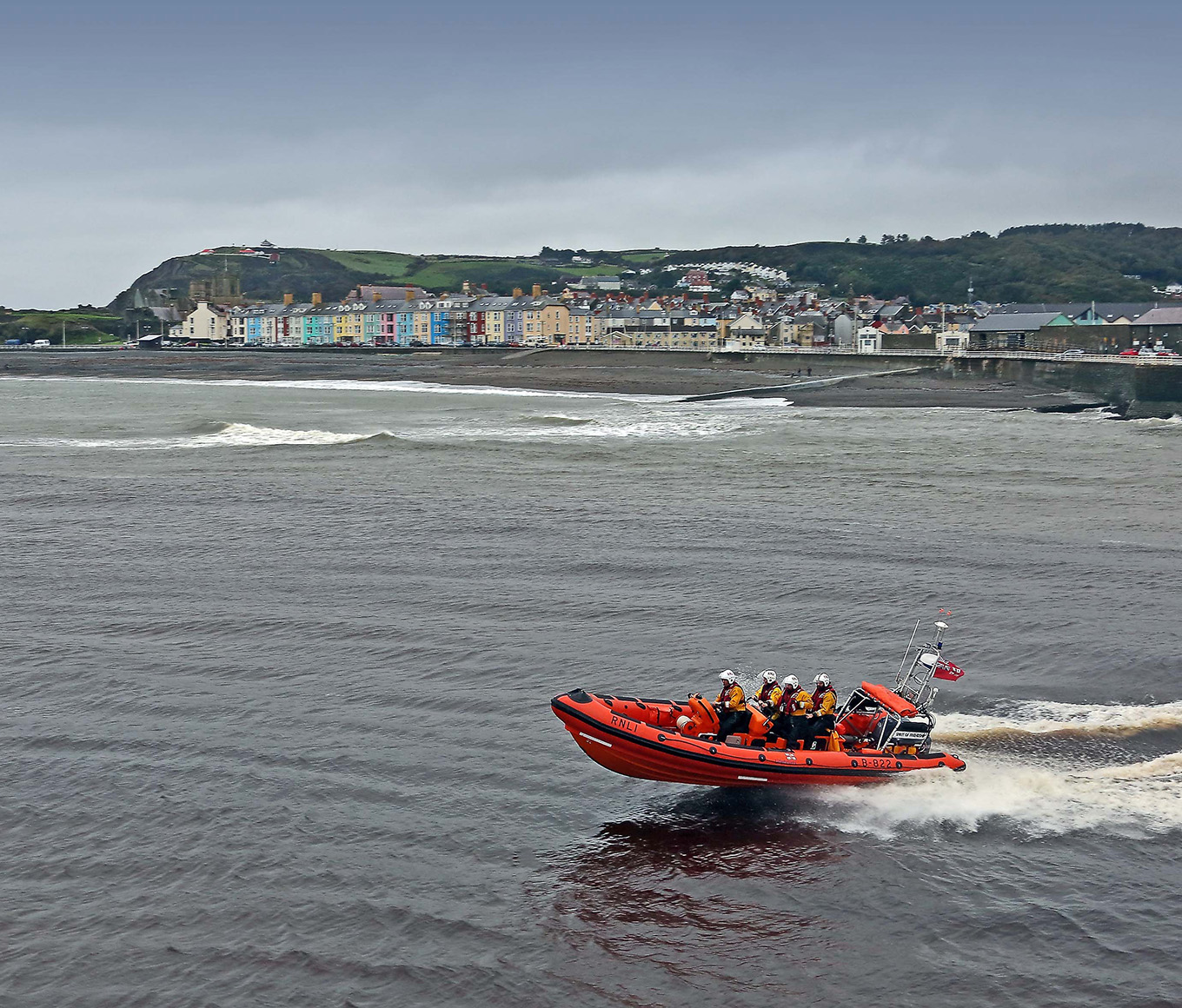
Saving Lives at Sea: Series 8 Episode 6
Discover more about the stories and stations featured in series 8 episode 6 of Saving Lives at Sea, with rescues from Dover, Cleethorpes, Aberystwyth, Torbay and Eastbourne.
If you assume the tide times and don’t check them, you can easily land yourself in trouble – which we discover in one of the rescues in this episode. Watch our video where we debunk four commonly believed tidal myths.
Dover: A critical capsize
The episode started with a call alerting Dover RNLI of a small inflatable boat that had capsized 6 miles out in the Channel, with 30 people onboard. The crew launched their all-weather Severn class lifeboat, and a coastguard helicopter was on its way.
Most of the people were recovered by another lifeboat, but worryingly, five were still waiting to be rescued from a liferaft. When the crew arrived, the people were extremely cold and wet, and in varying degrees of consciousness. A father and his teenage daughter, believed to be from Afghanistan, were in a critical condition. The crew gave oxygen and checked their breathing, while monitoring the other three casualties.
After a frightening ordeal, the crew felt a wave of relief when all five people regained consciousness, with the father and daughter showing promising signs of progress.
Over an hour after launching, the crew arrived back in Dover Harbour. The casualties were transferred to other agencies and had more medical treatment.
Cleethorpes: Cut off by the tide
Next, we saw Cleethorpes volunteers launch their D class inshore lifeboat after a 999 call came in about a man cut off by the tide at Buck Beck Beach. There was less than an hour of daylight left, and the tide was rising fast.
The man was stranded on a thin strip of sand, known as Pirate’s Cove, which is only accessible at either side of high tide. Six minutes after launching, the crew arrived at the scene and started scanning the beach. The state of the tide caused them concern, as they knew that the sand would be flooding quite quickly.
The crew caught their first glimpse of the man; his head was poking up over the back of the bank. When they realised that he was stuck, they got closer and pulled him onto the lifeboat. Once he was safely onboard, they headed back to the coastguard team waiting on the shore.
Aberystwyth: Broken-down boat
In Aberystwyth, the crew launched their Atlantic 85 within minutes after a rigid inflatable boat (RIB) lost engine power in the harbour. The wind was wild, causing the RIB to drift perilously close to some rocks.
With the RIB in serious danger, the crew knew they had to act fast. As they approached the harbour entrance, they were faced with large rolling swells. They had to wait for just the right moment before going any further – otherwise they risked capsizing.
Once the crew got closer to the RIB, they spotted two young men. They were wet and cold, but the crew were pleased to find that they had personal flotation devices. The anchor was the only thing keeping the RIB in place, but it was starting to slip. The crew sent across a tow line, and the two men quickly attached it to their vessel before dumping their anchor line.
Thankfully, the crew were able to pull the RIB out of danger. They made their way safely back to shore, where the men walked away unscathed.
Torbay: Teamwork pays off on a sinking yacht
Torbay RNLI launched their Severn class lifeboat in response to a mayday call from a yacht that was in danger of sinking, with six sailors onboard.
With 20-knot south-westerly winds and rolling seas, the conditions were rough. Suddenly, the skipper realised there was a problem. When they opened the hatch, it became clear that the yacht was taking on water. And fast. But nobody could see where it was coming in from.
Immediately, the skipper put out a mayday call. The yacht crew sprang into action and discovered that an ‘unopenable’ forward window had entirely popped out back into the hull, causing waves of water to flood in.
When the Torbay crew arrived, one of them quickly went onboard the yacht and used a large diesel pump to reduce the level of water. As a result, the yacht was able to make its own way under sail back to Berry Head. With quick thinking and teamwork, no one came to harm and the yacht was saved.
Eastbourne: Deer in the water
The episode finished with Eastbourne RNLI launching their D class inshore lifeboat following reports of a deer in the sea near Holywell.
After a 5-minute dash along the coast, they spotted the deer running around frantically and darting in and out of the water. Eventually, it came ashore and took shelter in some bushes, which, ironically, were outside the lifeboat museum.
A team of volunteers from several organisations came together to capture the deer. As they got closer, it made another bid for freedom. Jaiden Perna, Volunteer Crew Member, leapt into action and quickly got hold of the deer. He managed to hold the deer down for long enough for more people to help bring it under control and load it safely into the wildlife ambulance. Once they made sure that the deer wasn’t injured, they released it in its natural habitat – on the South Downs.
You may also enjoy the following










